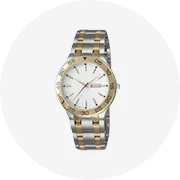Phổ biến trong ngành của bạn

Con lăn hình nón khoan bit Ba hình nón quay bit tricon với chèn hình đục lớn và dài
1.265,00 US$
Đơn hàng tối thiểu: 1 Cái


Khoan bit 32mm 6 nút 11 độ giảm dần nút bit cho hard rock khoan
2,99 US$ - 3,09 US$
Đơn hàng tối thiểu: 10 Cái


Dụng Cụ Khoan Đá Mũi Khoan Nút Côn Đường Kính 32MM Chất Lượng Cao Mũi Khoan Bán Chạy
2,70 US$ - 2,80 US$
Đơn hàng tối thiểu: 10 Cái


7 độ hard rock nút taper khoan bit 32mm 36mm 38mm tùy chỉnh hiệu suất cao TOP búa khoan công cụ
1,60 US$ - 3,20 US$
Đơn hàng tối thiểu: 1 Cái
Vận chuyển mỗi chiếc: 200,00 US$


Giảm giá 90mm Nút bit xuống các lỗ khoan bit dhd3.5 Shank
Sẵn sàng vận chuyển
94,00 US$ - 99,00 US$
Đơn hàng tối thiểu: 1 Cái
Vận chuyển mỗi chiếc: 32,15 US$



Mũi Khoan Đục Hình Nón Chất Lượng Hàng Đầu 28Mm ~ 60Mm
Sẵn sàng vận chuyển
2,50 US$
Đơn hàng tối thiểu: 10 Cái
Vận chuyển mỗi chiếc: 16,90 US$


7 độ Khoan Đá Côn Đục Bit Tungsten cacbua khoan bits đối với Rocking khoan
2,00 US$ - 8,00 US$
Đơn hàng tối thiểu: 1 Cái


7 Bằng Đá Khoan Côn Jack Búa Khai Thác Mỏ Đục Bit Côn Khoan Bits
5,00 US$ - 40,00 US$
Đơn hàng tối thiểu: 1 Cái

Cần Khoan Tích Hợp Với Mũi Khoan Loại Đục Ống Khoan Thon KHAI THÁC MỎ
8,50 US$ - 9,80 US$
Đơn hàng tối thiểu: 10 Cái


Côn Đục/Cross/Nút Khoan Bits 7 bằng cho Khí Nén Rock Drill
1,00 US$ - 20,00 US$
Đơn hàng tối thiểu: 10 Cái

Tungsten Carbide Taper Khoan Đục cho Đá và Đá Khai Thác Đá Nổ Mìn
4,00 US$ - 7,00 US$
Đơn hàng tối thiểu: 10 Cái


42mm chất lượng hàng đầu không khí Jack búa giảm dần đục khoan đá bit
4,58 US$ - 6,00 US$
Đơn hàng tối thiểu: 2 Cái

Khai Thác Mỏ Khoan Tungsten Carbide Côn Đục Bit Cho Jack Búa
2,00 US$ - 5,00 US$
Đơn hàng tối thiểu: 20 Cái

Mũi Khoan Lỗ Nhỏ Mũi Khoan Bit 20Mm 28Mm Phù Hợp Với Thân 19*108Mm
3,00 US$ - 8,00 US$
Đơn hàng tối thiểu: 10 Cái

Khoan Đá bit Vonfram cacbua đục bit công cụ khoan khai thác giảm dần khoan bit
Sẵn sàng vận chuyển
4,33 US$ - 4,96 US$
Đơn hàng tối thiểu: 50 Cái
Vận chuyển mỗi chiếc: 2,86 US$

Tungsten Carbide Côn Khoan Đục Cho Đá Và Đá Khai Thác Đá Nổ Mìn
2,80 US$ - 4,80 US$
Đơn hàng tối thiểu: 1 Cái

Chất Lượng Cao Khai Thác Mỏ Mỏ Công Cụ Khoan 7 Độ Taper Rock Khoan Đục Bits Để Bán
2,70 US$ - 3,00 US$
Đơn hàng tối thiểu: 100 Cái
Vận chuyển mỗi chiếc: 0,73 US$

Hotsale thon đục bit 36mm côn khoan bit khai thác đường hầm nổ mìn lỗ khoan búa khoan bit
3,50 US$ - 4,50 US$
Đơn hàng tối thiểu: 1 Cái

Giá tốt công cụ Khoan Kim Cương taper đục bit cho đá khai thác mỏ đường hầm và khai thác đá
7,85 US$ - 10,00 US$
Đơn hàng tối thiểu: 10 Cái
Vận chuyển mỗi chiếc: 1,97 US$

Thiết Kế Mới Carbides Côn Đục Mỏ 34Mm Rock Taper Nút Granite Khoan Bit Cho Bán Sỉ
2,80 US$ - 4,00 US$
Đơn hàng tối thiểu: 100 Cái
Vận chuyển mỗi chiếc: 0,73 US$

Mũi khoan bit nút thanh bit côn Shank khoan đục bit để bán
1,00 US$ - 15,00 US$
Đơn hàng tối thiểu: 500 Đơn vị

Nhà Máy Giá giảm dần đá khoan bit vuông rỗng đục khoan bit
3,20 US$ - 4,00 US$
Đơn hàng tối thiểu: 10 Cái

Panda Thiết Bị Sản Xuất Tại Trung Quốc Taper Đục Khoan Bits Khoan Đá Khoan Carbide Khai Thác Mỏ Bit Dome Khoan Bit
2,00 US$ - 10,00 US$
Đơn hàng tối thiểu: 1 Cái
Vận chuyển mỗi chiếc: 51,09 US$

Công cụ khai thác mỏ 20mm 22mm 24mm 26mm 28mm 30mm 32mm 33mm 34mm 36mm 38mm 40mm 41mm 42mm côn loại đơn đục khoan
3,30 US$ - 3,50 US$
Đơn hàng tối thiểu: 10 Cái

Hard rock 14~16 hard alloy quarry taper drill bit 43 chisel bit
2,00 US$ - 20,00 US$
Đơn hàng tối thiểu: 100 Bộ


Công cụ khoan đá 32mm để khai thác mỏ nước giếng khoan 89mm chất lượng tốt trong Ecuador giảm dần đục khoan bit
6,20 US$ - 6,80 US$
Đơn hàng tối thiểu: 1 Cái

Hard rock điện taper bit móng ngựa đục tungsten carbide đá khoan bit cho Jack búa khoan
5,00 US$ - 5,50 US$
Đơn hàng tối thiểu: 10 Cái
Vận chuyển mỗi chiếc: 10,73 US$

Mũi khoan chéo thon 7/8/11/12 Độ ĐụC bit được sử dụng cho nổ mìn đường hầm
6,00 US$
Đơn hàng tối thiểu: 1 Cái
Vận chuyển mỗi chiếc: 12,59 US$

7, 11 hoặc 12 Độ ĐụC nút chéo loại giảm Dần đá khoan bit để bán
1,50 US$ - 6,00 US$
Đơn hàng tối thiểu: 50 Cái

Trung Quốc Chất Lượng Cao 30 Mét Chéo/Đục Côn Khoan Bit/Giảm Dần Rock Khoan Công Cụ
Sẵn sàng vận chuyển
4,30 US$ - 4,90 US$
Đơn hàng tối thiểu: 1 Cái
Vận chuyển mỗi chiếc: 15,80 US$

Không thể thiếu khoan Rod với đục loại bit khai thác mỏ giảm dần khoan ống
6,82 US$ - 8,40 US$
Đơn hàng tối thiểu: 30 Mẫu Anh

Giá thấp hơn nghiêng giảm dần đục khoan bit taper đục bit lỗ khoan đá khoan công cụ
7,85 US$ - 9,90 US$
Đơn hàng tối thiểu: 10 Cái
Vận chuyển mỗi chiếc: 2,35 US$
Các danh mục hàng đầu
Giới thiệu về mũi đục thon nhọn
Alibaba.com cung cấp các sản phẩm 600 mũi đục thon nhọn. Có rất nhiều mũi đục thon nhọn lựa chọn dành cho bạn, chẳng hạn như 40cr. Bạn cũng có thể chọn từ bê tông, xây dựng mũi đục thon nhọn. Cũng như từ oem, odm, và obm mũi đục thon nhọn.Và bất kể mũi đục thon nhọn là thẳng.


















